Why we ran it: To see if a bright future lies ahead for the Smart brand reinvented under Geely
Month 1 - Month 2 - Month 3 - Month 4 - Final report - Specs
Life with a Smart #1: Month 4
Our time with the #1 is up. Has it wormed its way into our affections? Not quite... - 22 May
I have just turned 30 and find myself looking at the world in a slightly different way, from getting excited about buying a new iron to suddenly really wanting to do a marathon. Well, maybe a half...
So when a car calling itself 'Hashtag One' arrived on the scene, I immediately pulled that face people make when they hear someone mispronounce the letter "H". Couple that with the Smart's key being a glossy white disc that doesn't really sit comfortably on a key chain and it all felt a little too Gen Z for me.
But first impressions can be deceiving. I remember getting into the bulbous-looking #1 - ours in Premium trim - for the first time, sinking into the cream leather seats and thinking it was all actually rather nice. Yet one thought stuck out: 'This isn't very Smart-like.
Lets recap. The segment-straddling #1 is billed as a premium crossover rivalling the Renault Megane E-Tech and Kia Niro EV, with an emphasis on maximising interior space.
It is the first product of a new-age Smart, a firm now owned by Chinese behemoth Geely as well as Mercedes-Benz. This is no longer the quirky brand created in partnership with watchmaker Swatch; it is now a China-based marque using a well-known name and looking to become a global EV player.
This means the #1 is built (and was named) in China but styled in Europe, which is important, according to Mercedes design boss Gorden Wagener.
"Smart is a European brand, so we have to stick to that," he said at the Beijing show. "That is what the people in Europe want and people in the Chinese market want."
Wagener compared Smarts stylistic overhaul to that of Mini, moving from "too cute" to "grown-up sexy" with global appeal while standing out from the swathes of EVs currently flooding the market.
And stand out it does: no other car in the segment matches the #I's presence. It's also, for the time being, quite a rare thing: I've seen just two others out in the wild.
But beyond its looks the #1 needs to work as a car, of course. So when I was first handed the keys (glossy white disc), three questions came to mind. Will it actually be able to achieve the claimed 273 miles of range?
Will it be as usable as it seems on paper? Will putting almost all of the in-car controls on the touchscreen hinder the ownership experience?
Let's start with the first one. Aside from a few hauls from Southampton to Bristol, Birmingham and the Midlands, I spent most of my time with the #1 on my 130-mile commute. Usually set to Eco mode, it averaged 3.14mpkWh over our time together.
That equates to a 207-mile range from the 66kWh battery, which is pretty good for the segment. Thanks to the heat pump, I never needed to turn off the climate control in order to eke out more range.
What's more, the Smart has brilliant charging speeds: 150kW DC and 22kW AC. The latter was genuinely impressive: other cars I've tested cap AC at close to 11kW, so the Smart's set-up makes slow chargers more usable.
Charging aside, usability was good. The #1's bulbous shape gives a lot of interior space, with plenty of cubbyholes in the cabin. The 323-litre boot provides enough space for day-to-day life, with rear seats folding completely tat when more room is needed. And under-boot cable storage keeps things tidy.
The Premium's all-round sensors and 360deg camera make parking a doddle, its light steering was useful when traversing tight inner-city car parks and the head-up display is one of the clearest I've experienced.
The overall drive is pretty refined, thanks largely to excellent noise isolation, and it rides well.
I never warmed to the drivetrain, though. Those who have followed this journey will already know my gripes, from the overly heavy brake regeneration (which cant be turned off) to the rather laggy pedal response. Yes, you get used to it, but it didn't leave me any less frustrated.
The overzealous driver monitoring system was also grating: it's always poised for a moan if you take just a little too long looking at traffic at a junction - while stationary. And that takes us to my final gripe: the car's dependence on its infotainment system interface.
On one side, the 12.8in screen is colourful and clear. Yet, as with Volvo and the #1's EX30 sibling, Smart's decision to put most control functions within the touchscreen comes straight from the we think we know what people want playbook. Door mirror adjustment, for example, requires a deep dive through three different menus.
That reason alone is why I don't exactly find myself pining for the #1. As a companion it served its purpose well, with great practicality, fast charging speeds, lots of standard kit and decent range.
But its drivetrain and that touchscreen dependence grated too much, leaving me with a lukewarm feeling. Im promised over-the-air updates are coming to fix some of the above (other #1 owners have also had words with Smart), so it will be interesting to see how much of a difference that makes.
But right now, there are better options in the £40k range out there.
Second Opinion
The #1’s driving experience and cabin aren’t without merit. But the regen is a little overzealous and the throttle is hard to modulate, particularly when you lift off. Inside it’s refined and the screen is easy to navigate, but the lack of physical buttons is frustrating.
Sam Phillips
Love it:
Charging speeds 150kW DC speeds are great, but the real winner was the 22kW on-board AC charger.
Smart Divisive. Trying to convince Matt Prior the Smart is ‘pretty’ sticks in my mind. I stand by it.
Screen The 12.8in screen is clear, colourful and well positioned. I can’t fault the Android Auto pairing, but…
Loathe it:
Screen …I can fault the absence of physical buttons. Nigh-on every control hides behind multiple menus.
All-controlling stalk With one stalk used as the drive selector, the other combines lights and wipers. Too much to handle.
Final mileage: 6328
Good screens don't need to lead to distractions - 8 May
As other car makers push for bigger and plusher digital displays (we see you, Mercedes), the #1’s slim, 9.2in instrument cluster is just right. It shows what you need to see: namely, a clear speedo and unobstructed miles to go. No guff, no distraction, no fox (if you know you know).
Mileage:
Life with a Smart #1: Month 3
It differs to its Volvo twin more than you might expect - 24 April
Have you ever known twins? It's remarkable how similar they can be in many aspects that they themselves don't realise - but also how different they can be.
Take a pair I know. They are both very clever, have the same sense of humour and look, of course, very similar. Yet one works in medicine and the other, well, doesn't.
Clearly, the Smart #1 and Volvo EX30 aren't identical twins. They look very different: one is a bulbous, contemporarily designed crossover marketed to premium customers, and the other is a sharp-looking raised hatchback, positioned to undercut premium rivals.
Their interiors are also very different, with the #1 pushing Mercedes-Benz E-Class levels of luxury and kit compared with the EX30's simplistic, minimal spec. However, under the skin, they are largely identical.
Both the Smart and Volvo brands are part-owned by Geely, so both of these cars use the Chinese giant's SEA2 EV platform and the same permanent magnet synchronous motors) and have the same batteries: 66kWh nickel manganese cobalt or 51kWh lithium iron phosphate (offering ranges of between 213 and 290 miles).
We recently brought the pair together for a huge test of sub-£40,000 EVs (Autocar, 27 March), giving me a chance to poke around and drive them back to back.
Now, I've made my feelings about the #1's powertrain clear several times, but to summarise for those new to the class: it takes about a second to react to accelerator inputs; it has too much power; its regenerative braking is too strong, even in its lowest setting, and is deployed too early; and it isn't as efficient as it should be (I'm averaging 3.2mpkWh).
The combination of these things, for me at least, results in some out-of-comfort-zone situations: the #1 has cut it fine when entering junctions and has made me unintentionally speed as I try to work out the correct amount of pedal pressure to counter the regen coming in.
I say 'for me at least' because the response from #1 owners has been mixed: some have told me I'm just dead wrong and "need to get my car checked", while others have confirmed they are grappling with the same issues and are pressing Smart for a fix.
Naturally, when I got into the mechanically almost identical EX30, I expected to feel the same - but it couldn't have been more different to drive.
The Volvo felt more like a car, less like a piece of tech. The regen was softer, deployment was sharper and its efficiency was more in keeping with what it had promised.
It wasn't perfect, though: the steering was a tad light, the ride was hard and the safety tech was, unbelievably, more intrusive than in the nannying Smart. Where the #1 stole the win in my eyes was with its interior usability.
Although both cars have their core controls within their touchscreen infotainment system, the =1 has several physical shortcut buttons and a digital instrument display.
The EX30 has a Tesla-style all-in-one display, with your speed displayed in the top right of the portrait screen. For something like this to work, it needs to be sleek, but Volvo's effort was unusually clunky, cluttered and a bit of a faff to use.
So both of these twins have their charms and both have their faults. You would be just as happy (or reluctant, depending on your intentions) with time in either.
Love it
Sparks fly
The #1’s on-board charger can handle rates of up to 22kW, which is really handy for a quick AC top-up.
Loathe it
Plastic faces
I know there’s a trend from EV makers to eke out as much range as possible, but do they really need to make the wheels look worse in the process? The #1’s are ghastly
Mileage: 6328
The Smart #1 has the Goldilocks blend of buttons and touchpads - 17 April
We write a lot in these pages about our love of physical buttons, especially as much of what they used to control has now found its way into on-screen menus. The #1 has found a middle ground of sorts with five shortcut touch-sensitive icons beneath the infotainment touchscreen. However, the hazard light control can be faffy; this should be a physical button.
Mileage: 6328
We ask Smart’s top salesperson who’s buying this EV – and her answer is a surprise - 3 April
For those in the market for an electric executive car, the Mercedes-Benz EQE is one of the most luxurious options currently out there.
The £68k-up E-Class EV might be just the thing for that environmentally conscious decision maker who's after some business wheels to impress - especially once the vast Hyperscreen has been bunged in.
So when Neave Corr, a 'Smart expert' based at Mercedes-Benz World in Brooklands, Surrey, told me prospective EQE customers are ditching that idea and instead taking a #1 home, it was a bit of a shock.
"They were coming in for an EQE but walked past those cars to see what that quirky-looking thing was at the back of the showroom, she said. "I'd tell them 'it's a Smart', to which they were shocked by how much it's changed'. As soon as they had seen the standard spec sheet, they would want a drive."
Yes, both aspiring and stalwart Mercedes customers are jumping into something that looks more like a first-generation Nissan Juke than a classy limousine. Amazing.
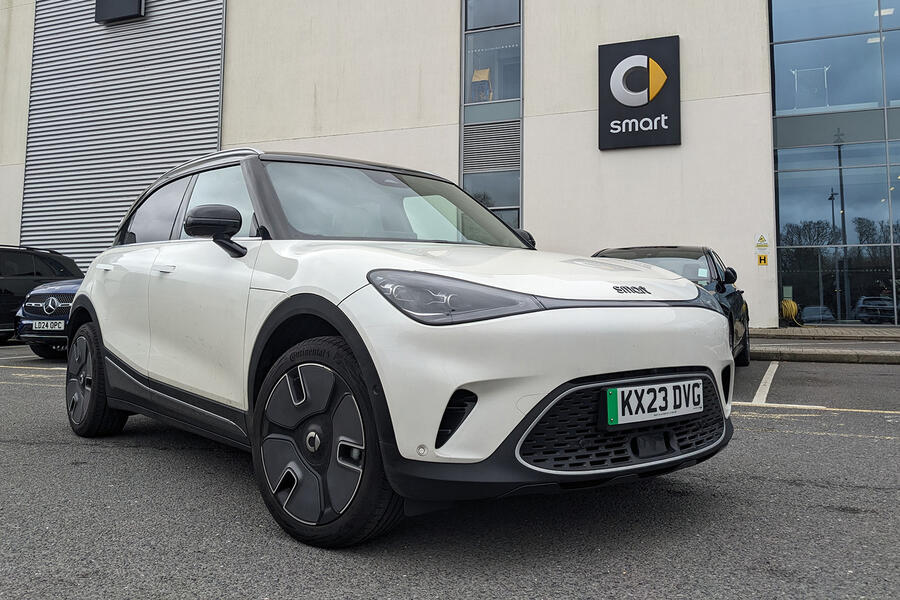
Central to this is the value the #1 offers. Even the £36k Pro+ version brings a similar level of standard equipment as an £85k EQE, with heated, electrically adjustable and leather-wrapped seats, ambient lighting, enhanced adaptive control, a heat pump and even a fridge. Only the Mercedes' massage function is missing.
Ultimately, though, Corr believes it's down to how the car looks ("They love how quirky it is") coupled with its five-star Euro NCAP safety score. "A lot of people who come in see the specs, see the safety score, think 'that looks cool', decide to go for a drive, then just fall in love," she said.
This was a surprise, given my own grumblings about the Smart's heavy regenerative braking and overzealous driver awareness tech, which were echoed by other Autocar testers during last week's sub-£40k EV mega-test - a key reason for it finishing 12th out of 12.
I asked Corr whether any customers had reported similar issues. "There have been a few, but most people really like how the car drives compared with other cars they have test driven or owned," she replied, giving a special mention to the Volkswagen ID 3.
This corresponds with an email I received from a #1 owner, who politely observed that "I don't recognise your driving experience. I have only found the drive to be smooth and easy to modulate." In any case, confirmed Corr, much to my delight, these niggles would be addressed in an over-the-air software update in July.
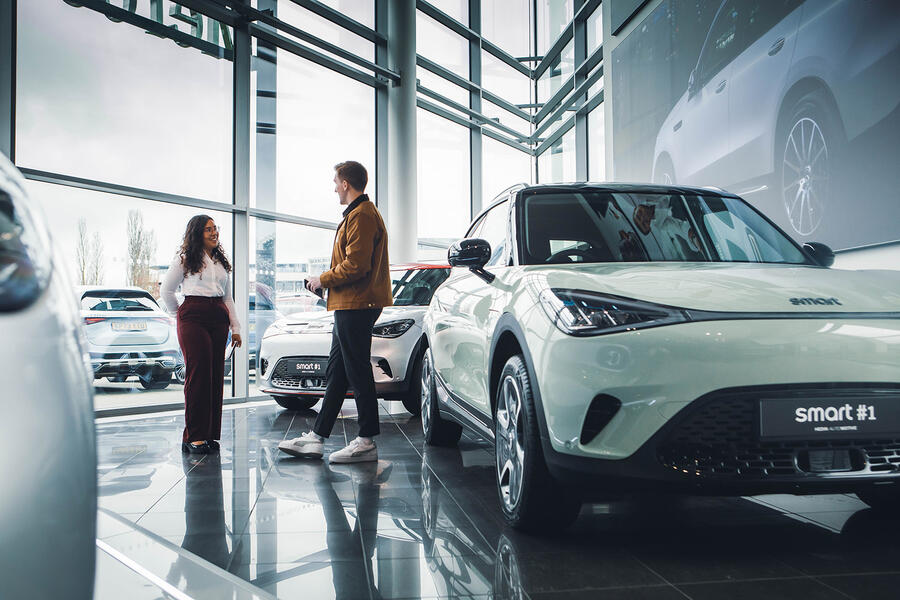
Since the #1's launch in September last year, Corr has been Smarts' top salesperson in the UK, managing to sell 50. At the time of our conversation, she was having her biggest month so far, with 12 sold midway through March. "They just sell themselves,
Of those 50 sales, the range-topping Premium version was most popular (55%, followed by the high-performance Brabus (40%). Another thing in the #1's favour is the buying process. Being under the Mercedes umbrella, Smart also uses the agency model, whereby the price is the price and haggling isn't an option.
"Once people understand the sales method, there aren't really any issues. It means you can either afford it or you can't," said Corr.
Smart makes this method even simpler by reducing the buying process to three steps: choose one of the four model variants, choose one of nine paint colours (which is matched to either one or two interior choices) and choose your payment method.
"The streamlined process of buying a Smart makes it easier to sell," said Corr. Next up for the brand is the #3, ultimately a stretched version of the bulbous #1 - and there's already an "unofficial" waiting list for it, said Corr, mainly comprising those who liked the #1 but found it too small.
Smart, then, is quietly advancing in the UK. Admittedly it's so quiet that I've seen only one other #1 on the road. But clearly there's a market for this car - and one that I imagine will continue to grow as the brand's line-up expands.
Love it
Flexible rear
I can slide the back seats forward a tad to get more stuff in the boot, and no gaps appear, as there’s an extra bit of carpet that pulls out.
Loathe it
Too much to handle
The right stalk just selects drive, leaving the left stalk to do the rest. The result is much twisting of the left stalk to control the front wipers, there’s only one rear wiper setting and the foglights are relegated to the touchscreen.
Mileage: 6328
Life with a Smart #1: Month 2
For all drivers to go electric, EVs need to feel more familiar than this - 13 March
There has been a tirade of negative stories about EVs in the mainstream media recently, about how they're damaging the British economy, now they're actually not economical at all and how they're causing 'petrol cars to be banned'.
These stories, which have been dubbed a vocal anti-EV campaign' by a House of Lords report, have been harming public confidence as we move towards the end of new ICE car sales in 2035 - and manufacturers, politicians and environmentalists have been fighting back with facts.
While such stories are dubious, they do highlight how much of an adjustment going electric requires. Certainly in my experience, EVs need to get better - or should I say friendlier - to win over much of the wider public. And a classic case of why is the car I'm currently driving: the Smart #1.
If I were a member of the public thinking about going electric after years with ICE cars, the experience of the #1 would cause me some real concern, even if I had done my research before committing. No, the #1 isn't a terrible car to drive, but it does require a lot of adaptation before you can get the best out of it.
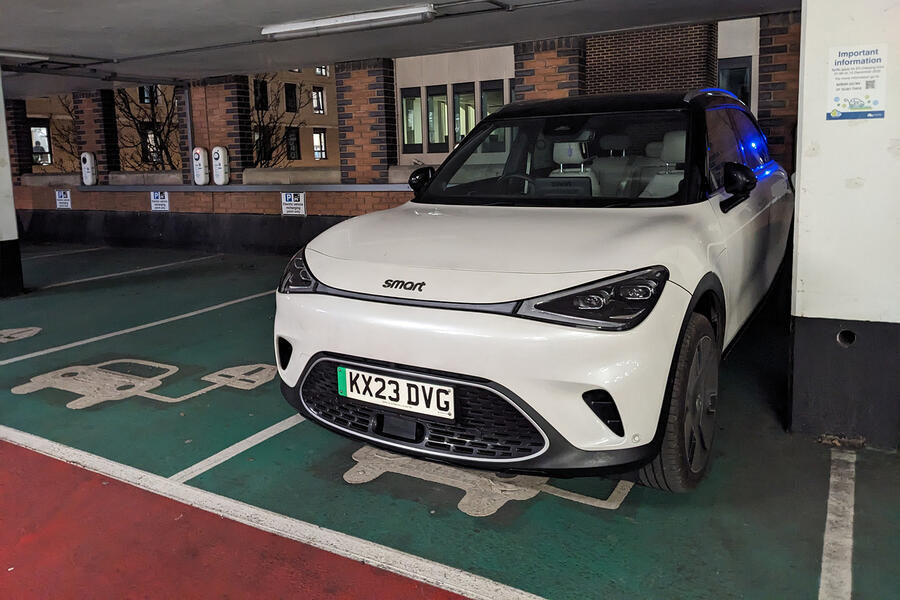
You see, its regenerative braking is stern enough to give a one-pedal driving experience, even in its weakest mode, and it can't be switched off, plus there's a delay of around a second to the regen kicking in when you start to release the pedal and likewise to acceleration when you depress it.
This can take you completely out of your comfort zone and make you overthink at junctions. Early on in my time with the #1, I found that it was making me speed in certain situations, due to the delicate and delayed nature of the accelerator pedal and the regen taking up about the first third of its mapping.
It feels more like a clutch on the brink than an intuitive single pedal because it's difficult to judge your power input based on feel alone.
As I mentioned earlier, this isn't a characteristic that's exclusive to the #1. Similar traits can be found in, for example, the closely related Volvo EX30 and the GWM Ora 03 (née Ora Funky Cat).
Significantly, those EVs were both also engineered in China, whereas European and Japanese EVs have generally in my experience felt better calibrated. The best of the breed feel more like their familiar ICE counterparts, not being overly complicated and offering more adjustability.
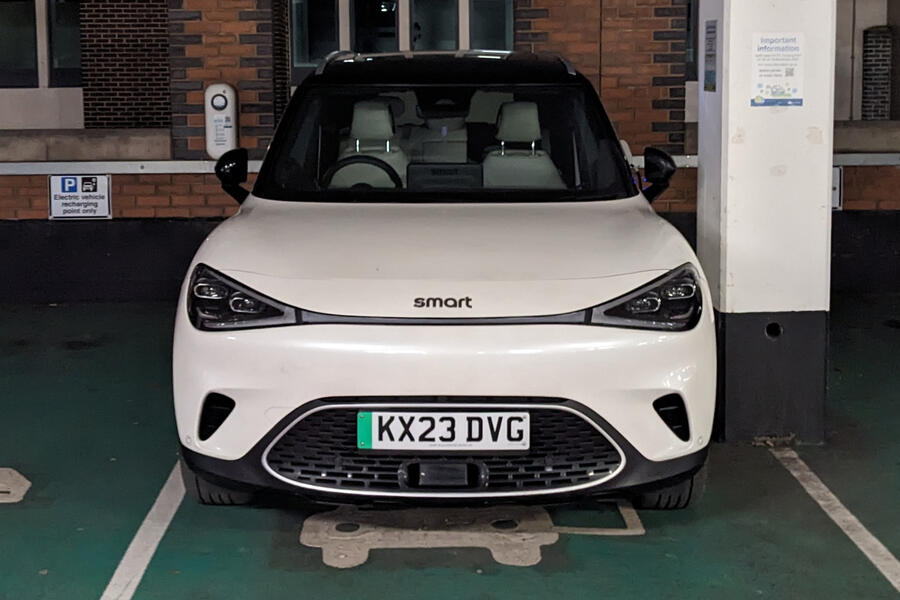
For example, the likes of the Lexus RZ and Audi E-tron GT allow you to turn regen off or at least way down, enabling you to coast, which will be important for those nervously transitioning from an ICE car to an EV.
A car that has been engineered perfectly for transitional drivers is the Vauxhall Corsa Electric - for the time being, the UK's cheapest EV.
Vauxhall has hit every note that all EV makers should be aiming for basically, the EV feels like a petrol-engined Corsa, just without the gearshifts, yet not to the detriment of its energy efficiency.
What a lack of straightforward drivability also does in the case of the #1 is take away from how great an all-round package it could be.
It offers a decent real-world range for an EV (I've found it's about 210 miles in motorway use or 230 miles in mixed-use), it supports AC charging speeds of up to 22kw, and in Sport driving mode it can hit 62mph from rest in a mere 3.8sec.
Its Mercedes-designed interior is also fantastic, with a look that screams premium, impressive technology and comfort that's meticulously adjustable.
To say that I'm not enjoying the #1 would be unfair, because there are a lot of aspects I do like, especially after a bit of bedding-in time, but this truly does feel the furthest from a conventional car that I've driven in this new electric age, which will surely hinder its ability to win over first-time EV buyers.
Love it
No wires needed
Wireless Android Auto is really handy, especially as my phone’s USB port is a bit dodgy. It looks great on the 12.8in screen, too
Loathe it
Coming in hot
A recent over-the-air software update brought heated steering as a ‘winter gift’. Great – but will it get taken away come spring?
Mileage: 5154
Life with a Smart #1: Month 1
A trip to the tip shows this Smart car is a practical #1 - 28 February
What’s the first thing you do with a new car to test its usability? Take it to the tip, of course. With the rear seats (easily) folded down and 411 litres to play with (the VW T-Roc has 445), I slid in an old desk, a mediumsized wooden box and two bags of clothes, all around a set of golf clubs (not to be dumped; user’s own). No fuss. Thumbs up from me.
Mileage: 4104
Welcoming the #1 to the fleet - 14 February
Here's something I bet you never expected in Autocar: a magic trick. I'm going to say a word and then tell you what you saw in your mind's eye. Ready? Smart. Now, if you say you didn't see a quirky two-seater, I know you're lying.
The point I'm trying to make isn't that I should have reinvented myself as The Wondrous Wilberforce but that the public perception of the Smart brand is set in stone.
So when it unveiled the bulbous Concept #1 (pronounced hashtag one', regrettably) at the Munich motor show in 2021, it took us all a bit by surprise.
Yes, it had gone off-piste before - creating a roadster and modifying a Mitsubishi Colt to create a four-seat supermini-but never to such an extent.
With a stylish look that showed its Mercedes-Benz design studio origins, this electric crossover was certainly eye-catching. The question was whether Smart could keep it that way for production. Well, the car you see here is the result: welcome to Smart 2.0.
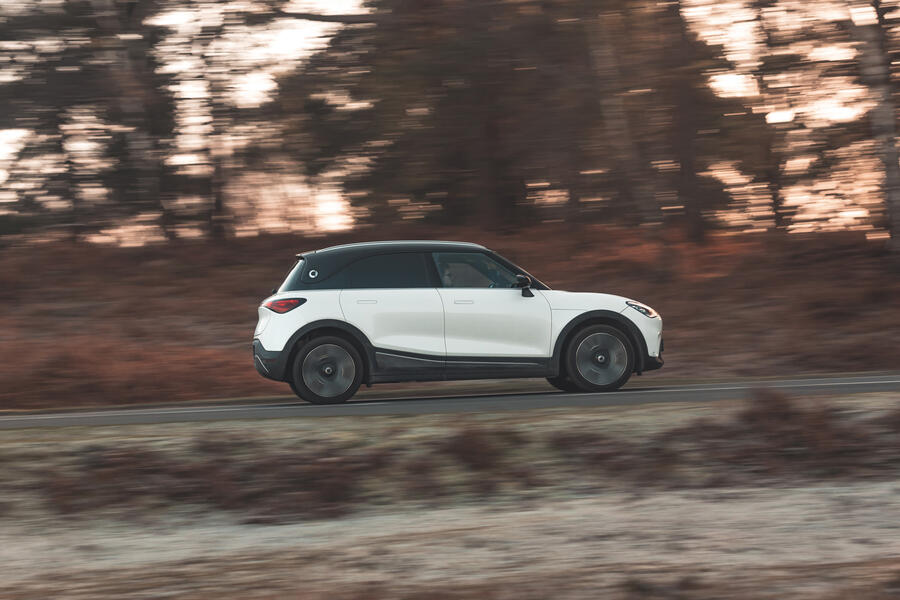
When the #1 arrived on our shores last summer, Smart Europe CEO Dirk Adelmann hailed it as "the nucleus of all things to come". Without wanting to lose any momentum, and before the #1 had even made it onto UK roads, Smart quickly revealed the #3.
Basically a stretched #1 in a similar vein to how the Volkswagen ID 4 grows on the ID 3, this SUV cemented Smart's new, reinvented look - and, more importantly, challenged how as a brand it would be perceived by the public: no longer a maker of quirky two-seaters.
Anyway, what we have here is Smart's electric reawakening. This is the brand's first new model since Geely - the Chinese giant that sold 1.7 million cars last year - took a 50% stake back in 2019. In fact, it is the first new model to wear a Smart badge in a whole decade.
Given that its unrelated to the old EQ Fortwo and EQ Forfour, it is a chance for the brand to break into the EV mainstream and become more than a creator of upmarket city cars.
The #1 is not quite a conventional hatchback and not quite a typically SUV-like crossover (very much like the now-renamed Ora Funky Cat we ran on our fleet previously) - a weird straddling of segments that IS becoming increasingly popular.

It is positioned as a premium crossover rivalling the Renault Mégane E-Tech and Kia Niro EV, with an emphasis on maximising interior space. In terms of design, this is a car of two halves: designed by Mercedes as is quite clear from the E-Class-esque, metal-plated interior) and engineered by Geely.
That last part is important: the #1 is the hrst Europe-bound EV to use Geely's new SEA architecture (heralded by the Chinese-market Zeekr 001 shooting brake). This will also underpin the EX30, Volvo's entry-level, £33,000 EV that is expected to do very well when it arrives later this year.
So well, indeed, that Smart recently announced a new entry-level #1 Pro model with a smaller (49kWh) battery and fewer features. Our car is the Premium, the top trim available before you hit the speed-crazed Brabus, which adds a second motor for 422bhp, 400lb ft of torque and 0-62mph in just 3.9sec.
For £38,950, the 268bhp Premium gives you 273 miles of range (thanks to efficiency of 3.7mpkWh) from a 66kWh battery, 150kW fast charging, a 12.8in touchscreen, a heat pump (of huge importance given the British climate), a plush interior and a host of safety features and other (hopefully) helpful technology. It really does feel very Mercedes.
On face value alone, and with the current costs of EVs considered, it seems pretty good value to me. But it will be behind the wheel, over the coming months, where the all-important questions will be answered. One of those key ones: could this car replace a combustion-engined Mercedes A-Class?
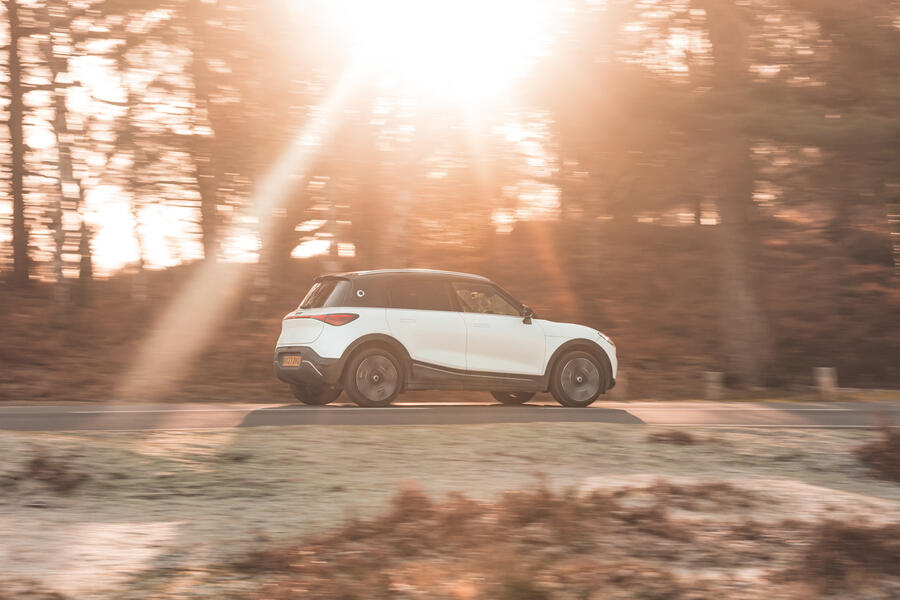
First driving impressions are, well, mixed. The #1 is a hoot in the corners, it's great around town and it just feels all-round composed. However, the strength of its regenerative braking (even in its lowest setting; it can't be turned off) gives the car a one-pedal driving feel, which will take some getting used to.
Like its Swedish sibling, the #1 relies heavily on its touchscreen, so much so that it is even needed to adjust the door mirrors, and that means traversing three menus. Those of you who have seen Matt Prior's YouTube review of the EX30 will understand my frustrations.
And I haven't even spoken about the quirky indicator sounds yet. More on that to come.
In sum, then: this 1s a good-looking, handily sized EV that's well suited to a small, modern-thinking, tech-savvy family, with enough range for a week of city living and school runs, plus a few longer commutes.
So it's rather unfortunate that I am at the other end of the spectrum, with a 130-mile run to the office and back. I'm not expecting to go two days without charging it, given how range-killing motorways can be.
How the #1 handles that and how much range it sheds will be something to note closely. It will be especially interesting to see how much using the heat pump preserves the miles. I have heard good things already.
So, watch this space, reader. Putting my few initial concerns aside, it seems that the #1 is a car with a lot to offer, and I have high hopes that it can deliver. Everyday usability will be the key. Like, I suppose, the Smart of old.
Second Opinion
It has taken me a while to figure out why I’m a bit lukewarm on the #1. After all, there is a lot to recommend it: price, range, space, equipment and more. It’s just a bit bland across the board – a bit appliancey. That’s fine, but it does mean that the handful of annoyances and drivability issues grate all the more.
Illya Verpraet
Smart #1 Premium specification
Specs: Price New £38,950 Price as tested £38,950 Options None
Test Data: Engine Permanent-magnet synchronous motor Power 268bhp Torque 253lb ft Kerb weight 1725kg Top speed 112mph 0-62mph 6.7sec Efficiency 3.7mpkWh CO2 0g/km Faults None Expenses None

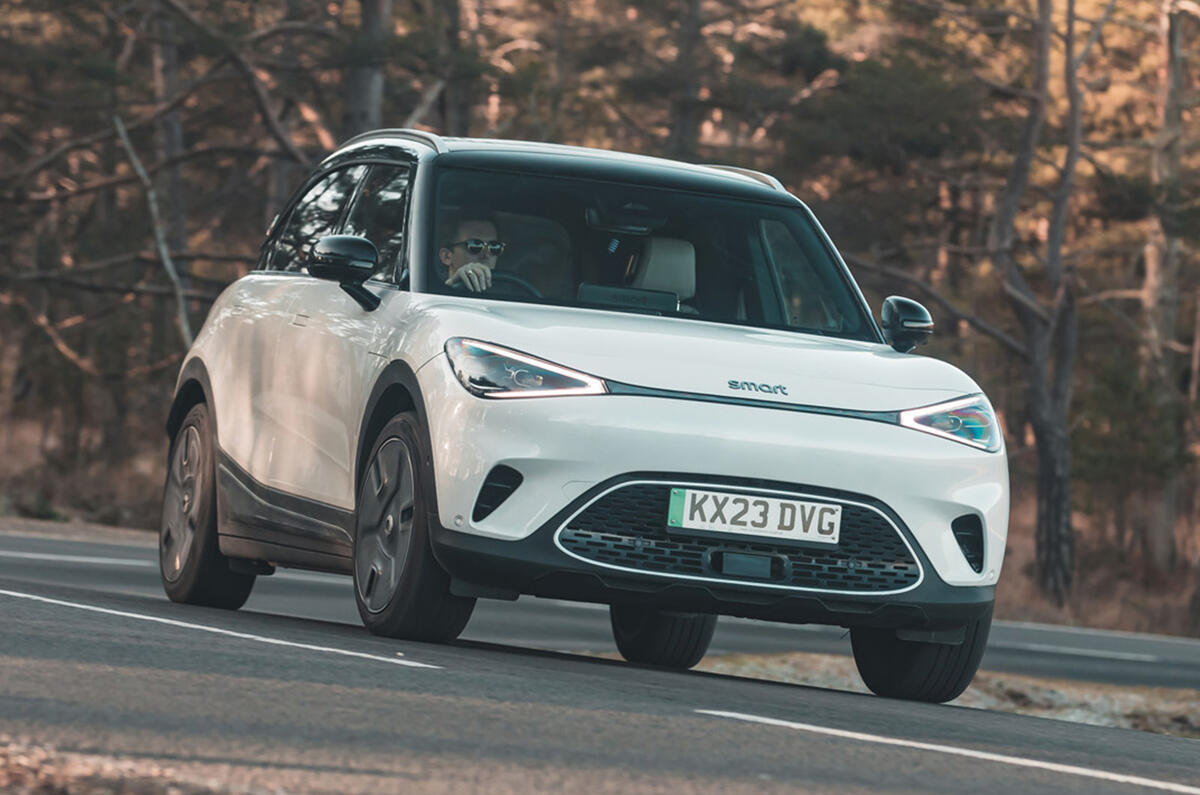
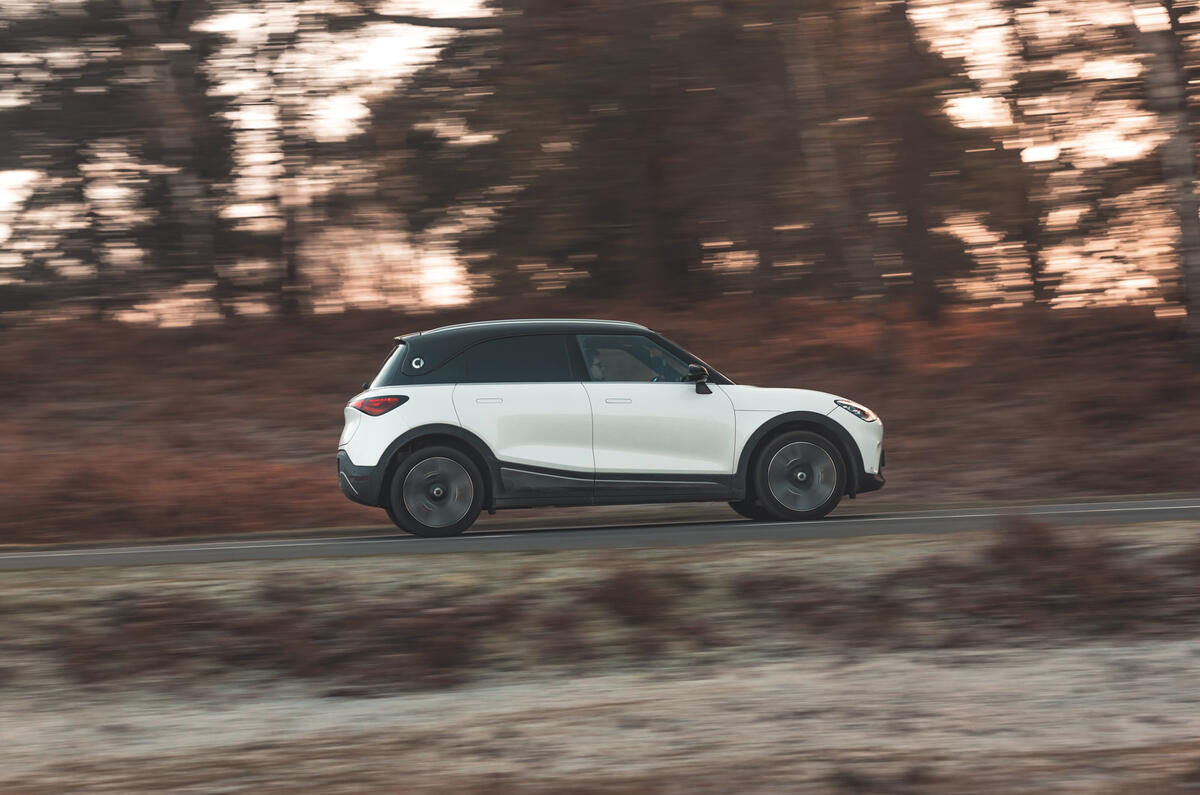



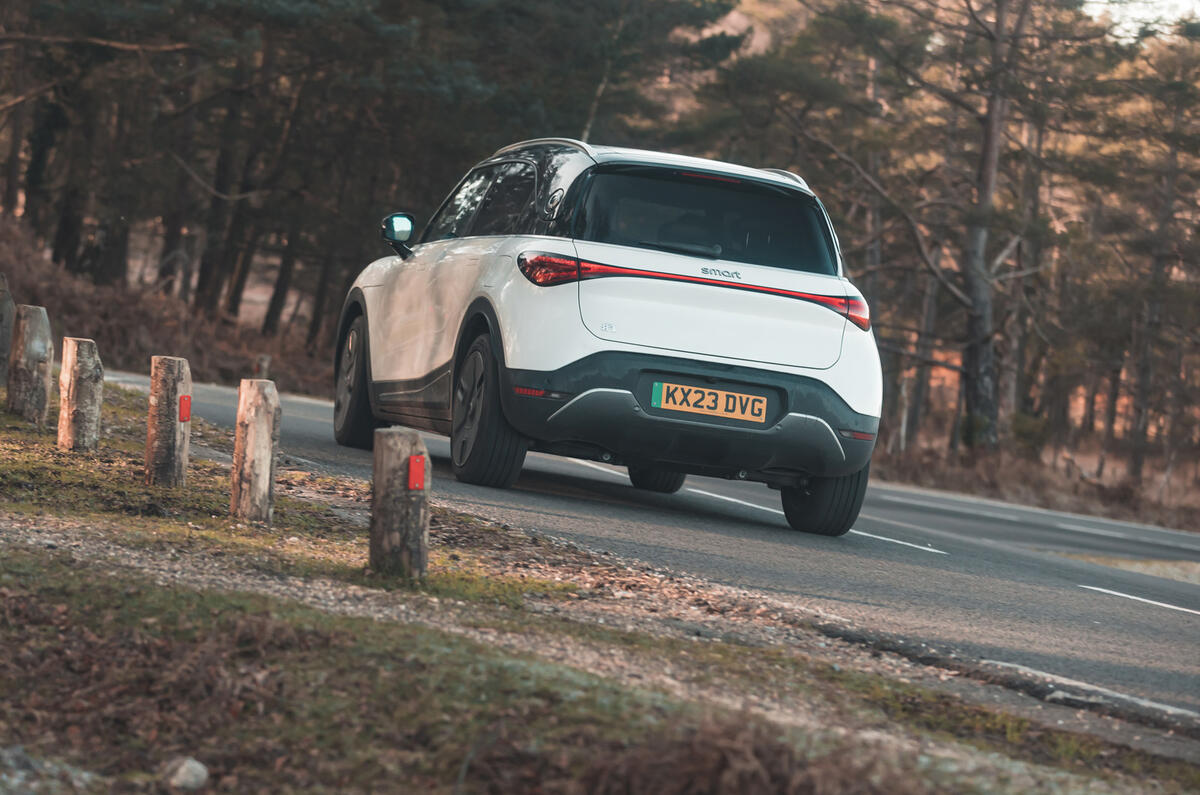
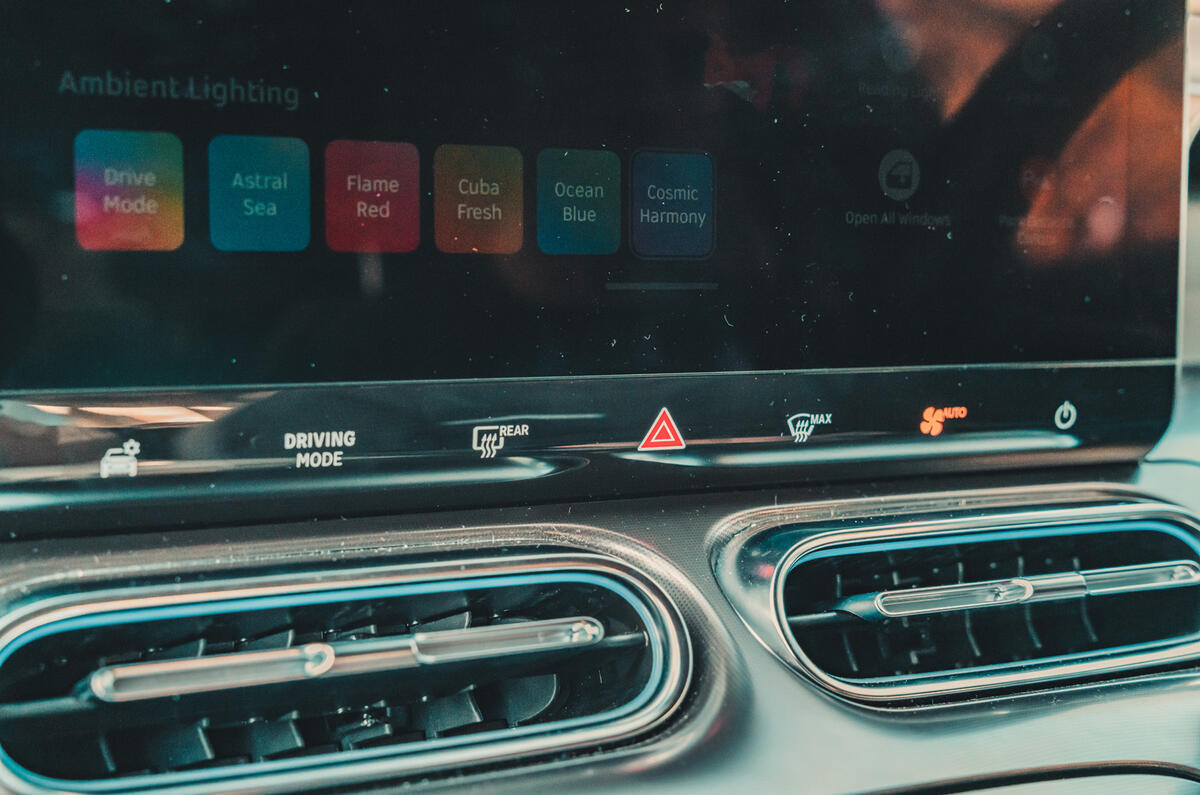





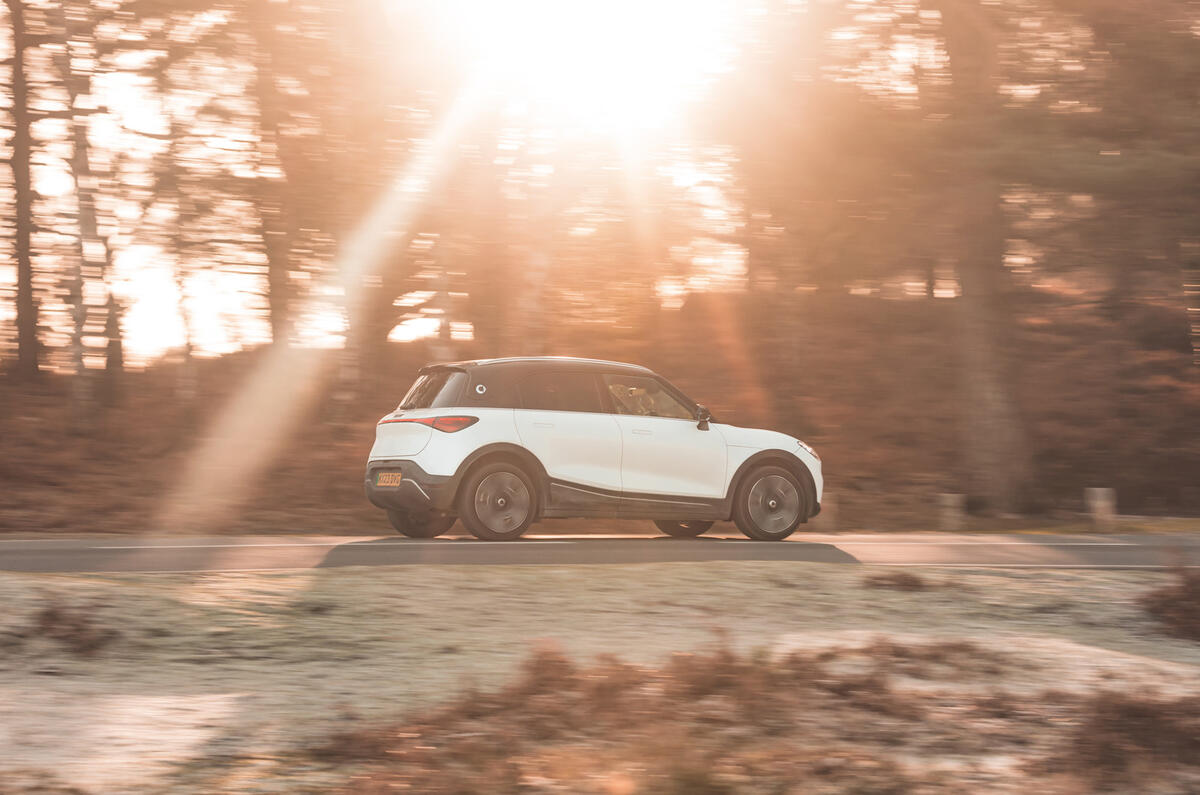

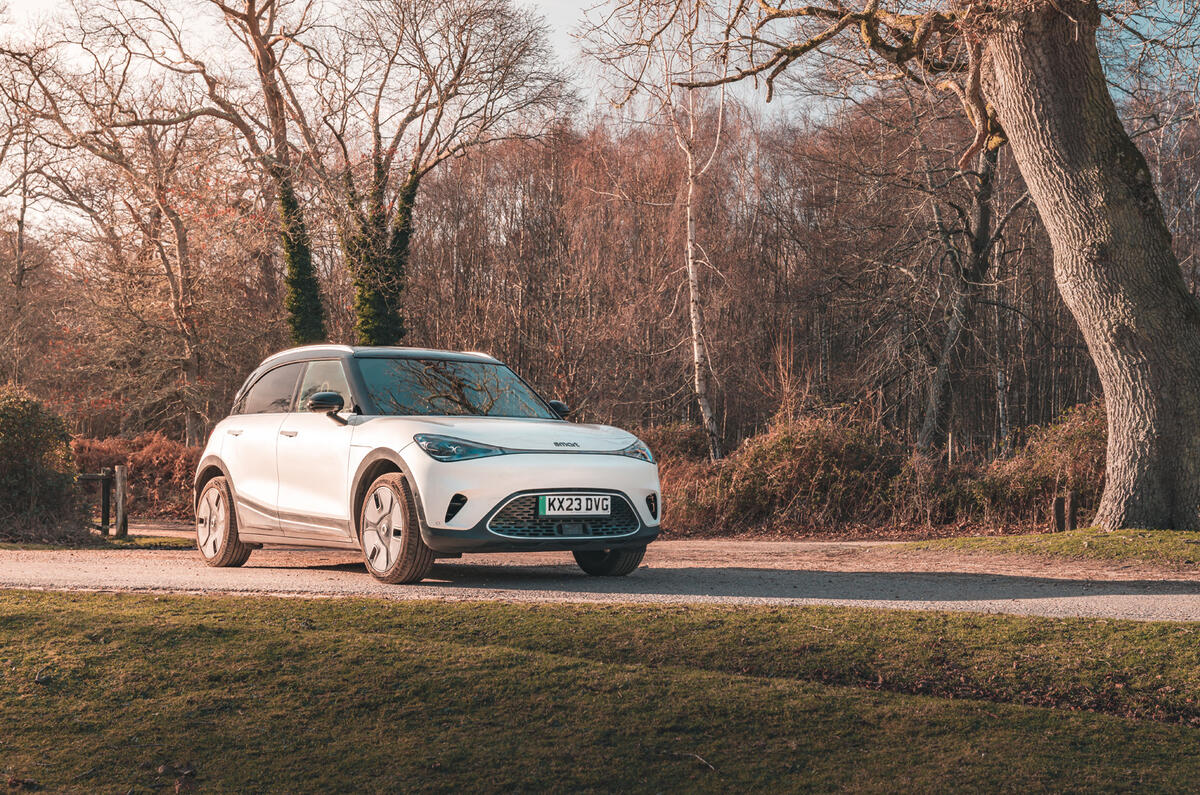
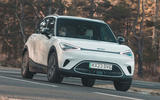






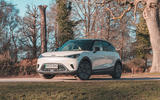








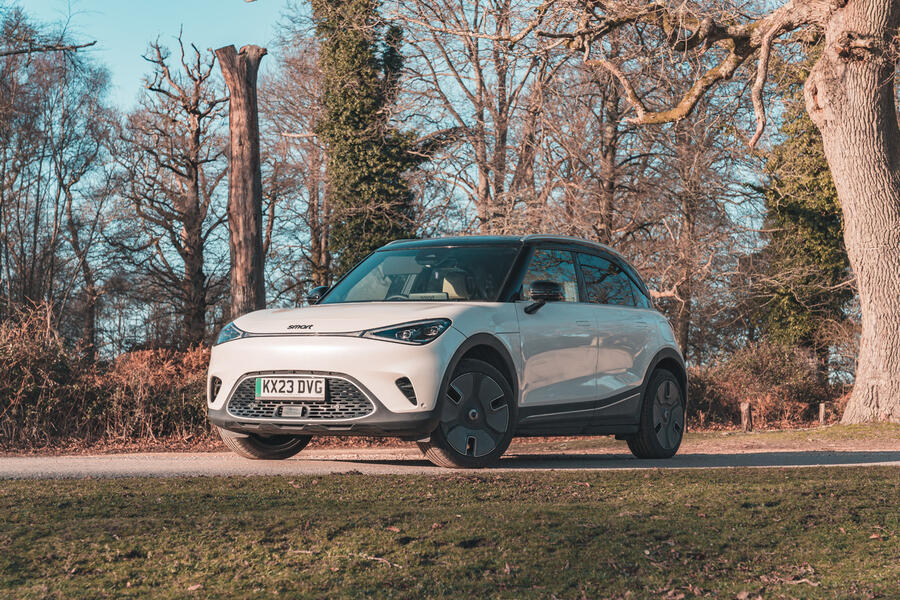

Join the debate
Add your comment
It looks like an angry Mini Countryman that melted a bit. I'm all for reinvention but this has none of the funky / cool design of any of its forebears. Looks anonymous. Pass...
With reference to your complaint about the wing mirrors, have you not found profiles? I am 5ft9 and my wife is 5ft4. Setting our profiles means that we can set the seat position, wing mirror position and HUD position so suit each of us. So when either of us gets in the car we just select our profile and adjust the rear view mirror. And if we drove the car last we just press the brake pedal to restore our profile. It couldn't be more simple.
Surely this needs a new brand name. Smart has established its reputation selling cheap and cheerful, quirky two-seaters that the transition to a five seat relatively expensive EV will not be easy. And right now there is a potential large market for any maker that can offer a small affordable electric car, which maybe is where Smart should be focused.